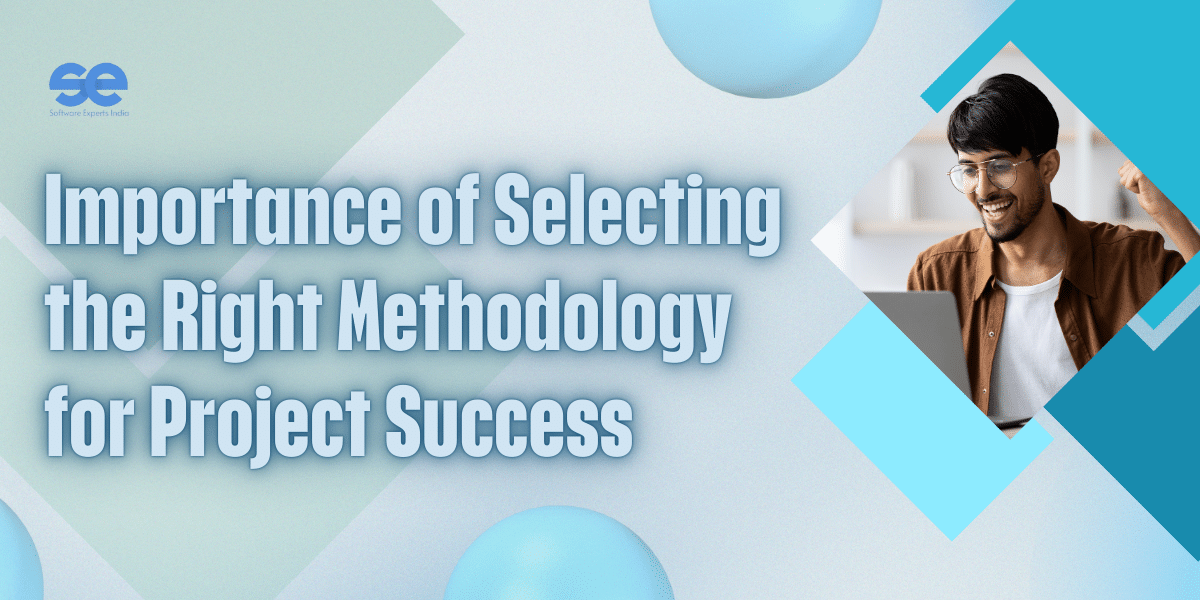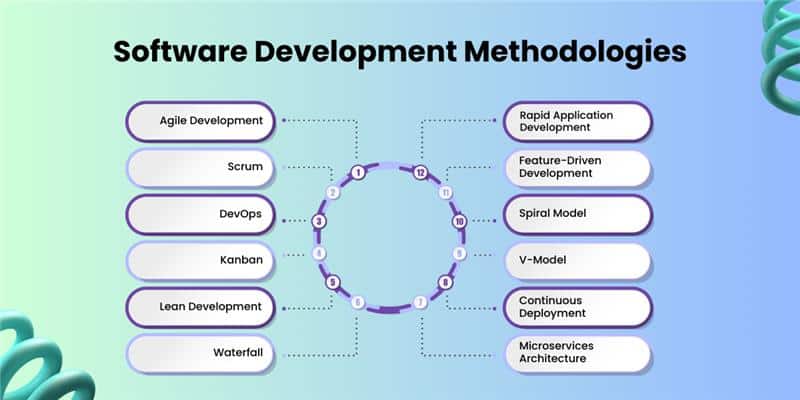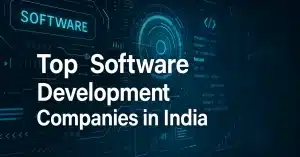Three things one needs to look at while they are going to adopt any System Development Methodology, the first being how well can the teams’ sync, next is how well the project meets client expectations and how efficiently resources are utilized. Earlier System Methodology followed a structured approach but now it’s more flexible and adaptive.
Some of the most widely used methodologies include Agile, Waterfall, Scrum, DevOps, and Lean, each with its unique processes and advantages. The key goal? To make sure that the development process is systematic, predictable and in sync with business objectives. Sounds simple, right? These methodologies are the blueprint for how software is built, maintained and delivered.
Importance of Selecting the Right System Development Methodology for Project Success

The choice of System Development Methodology has a profound impact on a project’s outcome.
- Certain methodologies are more suited for risk mitigation. The Spiral model emphasizes risk management at every phase while Agile frameworks like Scrum allow teams to pivot and make changes in response to new insights.
- The right methodology helps ensure that the software meets client expectations. In Agile, the stakeholders can see progress and provide feedback at the end of each sprint.
- Lean development methodology focuses on eliminating waste and is useful when resources like time, budget and personnel are limited.
- For quick updates or to adjust features based on customer feedback or changing requirements DevOps and Continuous Delivery provide the flexibility to do so.
Also Read : How to Choose the Right Software Development Model for Your Business
Want to know the best System Development Methodology? It’s time to check them out!

1. Agile Development
It’s the future of System Development Methodology. Having a flexible approach, it focuses on delivering small, functional pieces of software in frequent cycles, called “sprints.” Agile emphasizes adapting to changes.
The latest trends in Agile development:
- Blending Agile with traditional Waterfall methods to create a hybrid approach. This “Agile-Waterfall hybrid” is useful for projects that require flexibility.
- As organizations scale Agile across multiple teams, frameworks like SAFe is what that coordinates efforts and keep everything aligned at the enterprise level making even the largest projects manageable.
- Agile with AI and automation helping teams with tasks like automated testing, bug tracking, and sprint planning.
2. Scrum
This System Development Methodology is the framework that keeps you on track and it is a framework within the Agile methodology itself. Scrum is built on structured roles, ceremonies, and artifacts that keep teams aligned throughout the development process.
Latest trends:
- AI tools integrated with Scrum to automate repetitive tasks such as sprint planning, progress tracking, and backlog grooming.
- Embraces more diverse skill sets within teams and blends cross-functional teams including developers, designers, testers, and business analysts.
- Teams can remain synchronized using SAFe (Scaled Agile Framework) or LeSS (Large Scale Scrum) that grants enterprises to apply Scrum principles across large and complex projects.
Also Read : The Influence of AI and ML on Modern Enterprise Applications
3. DevOps
DevOps is the glue that binds development and operations that aims to speed up the software delivery pipeline and issues are detected early with CI and CD automates the deployment process.
Latest trends:
- DevSecOps is the latest evolution of DevOps where security checks and measures are automated. Security is a continuous process and yet an integral part of the entire development process.
- AIOps, where AI and ML are now being incorporated into DevOps. It uses data analytics to monitor, predict, and automate various IT operations processes.
- Turn infrastructure as code with GitOps which applies Git-based workflows to infrastructure management. Now you can manage your entire setup like a pull request—automated, seamless, and no more manual headaches.
4. Kanban
A visual workflow management method that helps teams optimize their task flow by organizing work into columns (e.g., “To Do,” “In Progress,” and “Done”), one task at a time.
Latest Trends:
- It’s not a standalone practice but now it is integrated with Agile. Being a hybrid approach, teams can manage both continuous flow and iterative and time-boxed sprints which makes it adaptive.
- Kanban merged with automation tools adds a layer of intelligence to the workflow. Integrating automation tools with Kanban boards to auto-assign tasks, track dependencies and even predict potential bottlenecks.
- Digital Kanban boards like Trello or Jira are becoming increasingly popular which makes it possible for distributed teams to collaborate in real-time.
5. Lean Development
Deliver maximum value with minimal resources with Lean development. It removes waste, reduces delays, and optimizes processes, thus eliminating anything that doesn’t add value to the end user!
Latest Trends:
- Just-in-time production instead of over-producing emphasizes building only what’s needed at that moment, reducing excess work.
- Eliminating bottlenecks related to coding, testing, or deployment. Focusing on what truly matters and getting the right software into users’ hands.
6. Waterfall
It is a traditional, classic approach to software development where each phase of the project follows a strict sequence. It is perfect for projects with well-defined requirements and minimal changes.
Latest Trends:
- Agile-Waterfall hybrid, this blend allows for clearer phases and deadlines. Also adapts to new insights and customer feedback throughout the project lifecycle.
- Waterfall 2.0 where incorporating feedback loops to adjust design or development phases mid-way through the process.
7. Rapid Application Development
It’s all about speed creating software quickly through iterative prototyping also emphasizes early testing to make improvements in real-time.
Latest trends:
- One of the biggest trends in RAD is the integration of low-code and no-code platforms. Developers and even non-technical users can prototype applications.
- Automated prototyping is used that reduces manual effort and accelerates the development cycle. AppGyver is a low-code/no-code platform that automates the creation of mobile and web applications.
8. Feature-Driven Development (FDD)
This System Development Methodology breaks down the project into individual and well-defined features that are delivered in short cycles.
Latest trends:
- AI-Driven feature prioritization to help predict which features need to be developed next and get to know when users frequently request a particular function or feature, AI flags this as a high-priority feature for development.
- Tools like Selenium and Jenkins can be integrated into the development pipeline to automatically run tests.
9. Spiral Model
It is a risk-driven development approach that is well-suited for large and complex projects. It combines the best elements of iterative development with a strong focus on risk management.
Latest trends:
- It’s a perfect fit when it comes to risk management and adaptability as this System Development Methodology often deals with unpredictable requirements and high-stakes risks.
- Combining the Spiral Model with Agile methodologies for frequent releases and continuous feedback.
- Advanced risk management in the Spiral Model is being enhanced by predictive analytics and AI tools.
10. V-Model (Verification and Validation)
Referred to as guardian of quality and is an extension of the traditional Waterfall methodology. Incorporates testing into every phase of development, this software meets the original requirements, and the verification checks ensure the software is being developed according to the design specifications.
Latest trends:
- The key modern updates to the V-Model are the incorporation of automated testing tools. For instance, using Selenium, one of the most popular tools for automating web application testing.
- Modern practices allow for more parallel development and testing, thanks to automation and collaboration tools.
- Shift-Left Testing is a common trend in the V-Model which conducts tests earlier in the development lifecycle.
11. Continuous Delivery/Continuous Deployment (CD/CI)
These are the modern software development practices and the goal is that the software is always in a deployable state.
Latest trends:
- For AI-driven test automation using Test.ai to leverage ML to intelligently execute and adapt test cases without human intervention.
- AI analyzes past testing data and predicts which features are likely to fail. You can stop wasting time and start finding bugs faster.
12. Microservices Architecture
Each microservice is focused on a specific business function and communicates with others via APIs. It is quite flexible as it involves breaking down large, monolithic applications into smaller, independent services.
Latest trends:
- With AI, the system can forecast traffic spikes, allot resources in advance and even optimize workloads. Imagine your app scaling up or down on its own, optimizing workloads without human intervention.
- AI-driven scaling of services where microservices can be resource-hungry, especially when demand fluctuates. AI-powered systems can predict traffic patterns and adjust microservice capacity in real-time.
In conclusion
selecting the right System Development Methodology is crucial for project success. If you are looking for flexibility with Agile, precision with Waterfall, or scalability with DevOps, choosing the methodology that aligns with your project goals, team dynamics, and business needs can make all the difference.
At Software Experts India, you will find a solid guide to the latest methodologies, helping you make informed decisions for your next project. Their expertise ensures that no matter the complexity or scale, they have the right approach for you.









